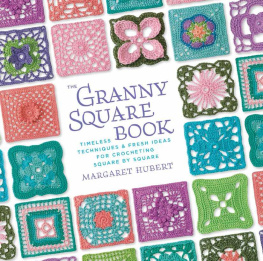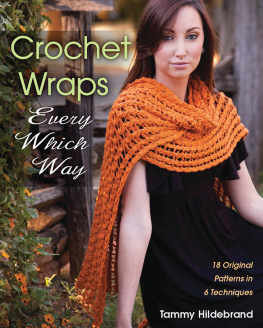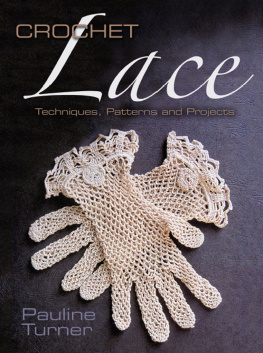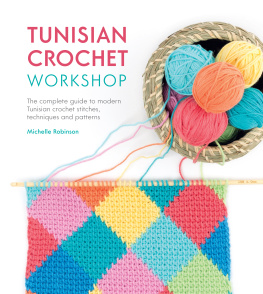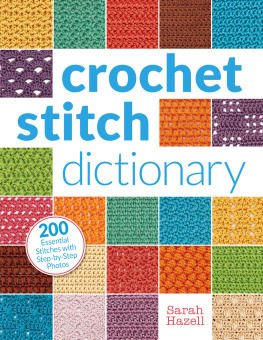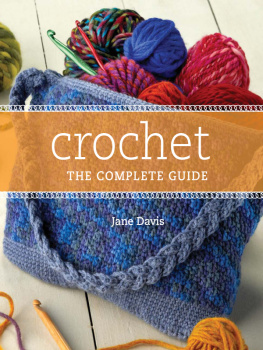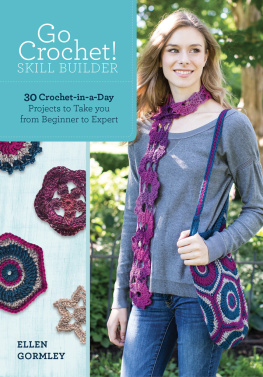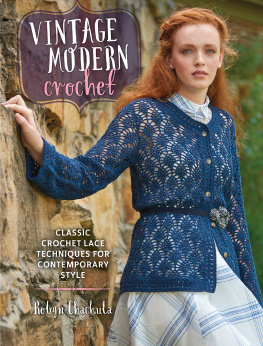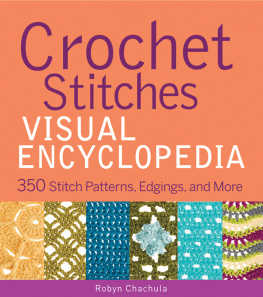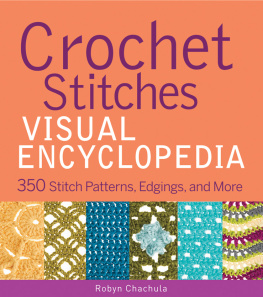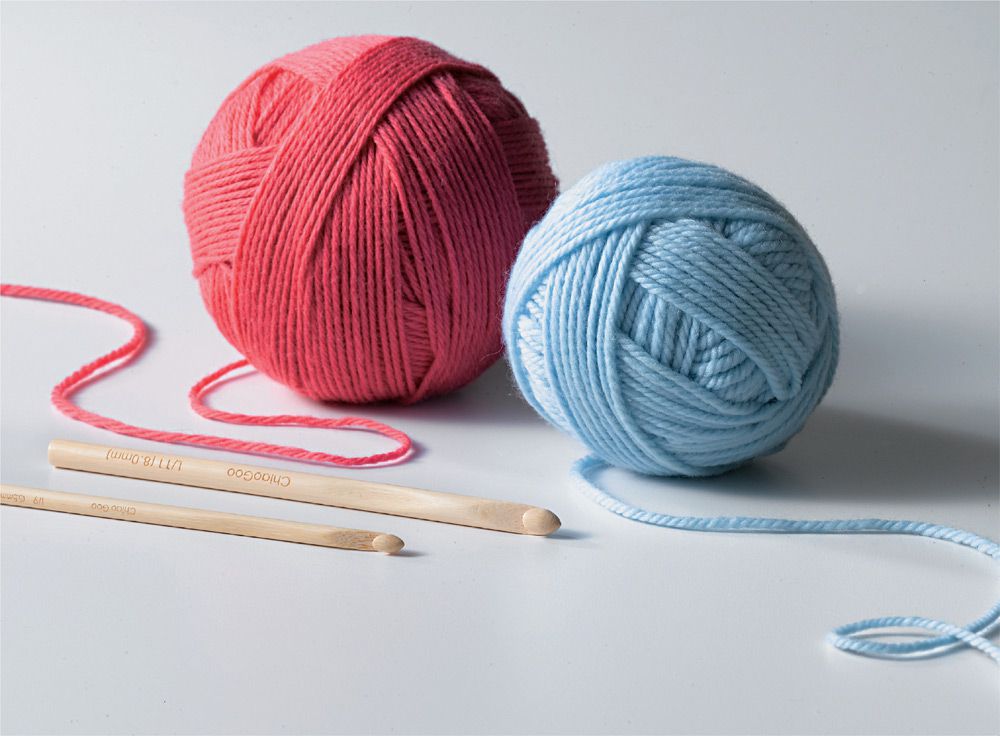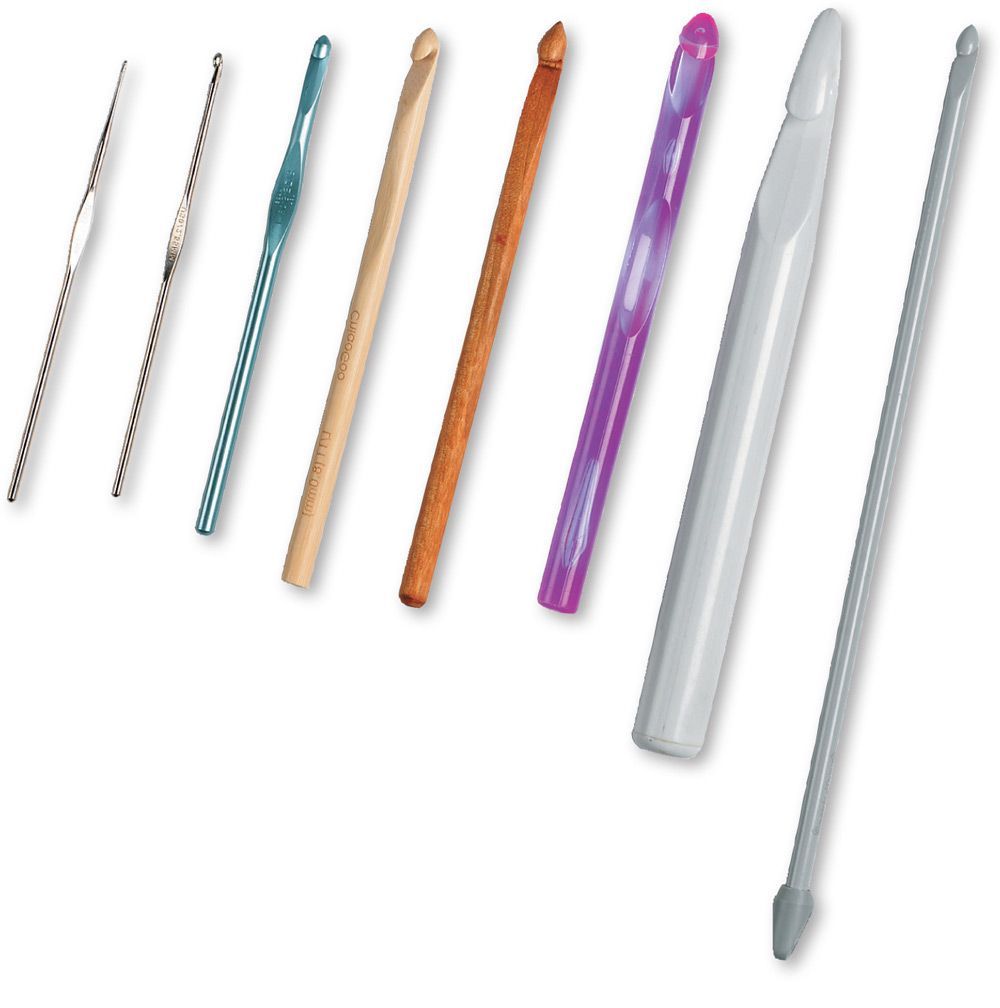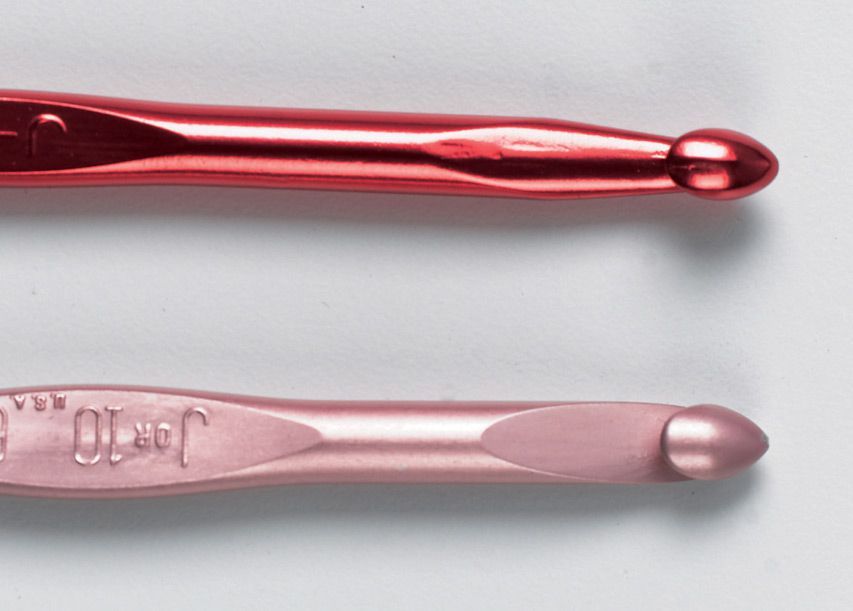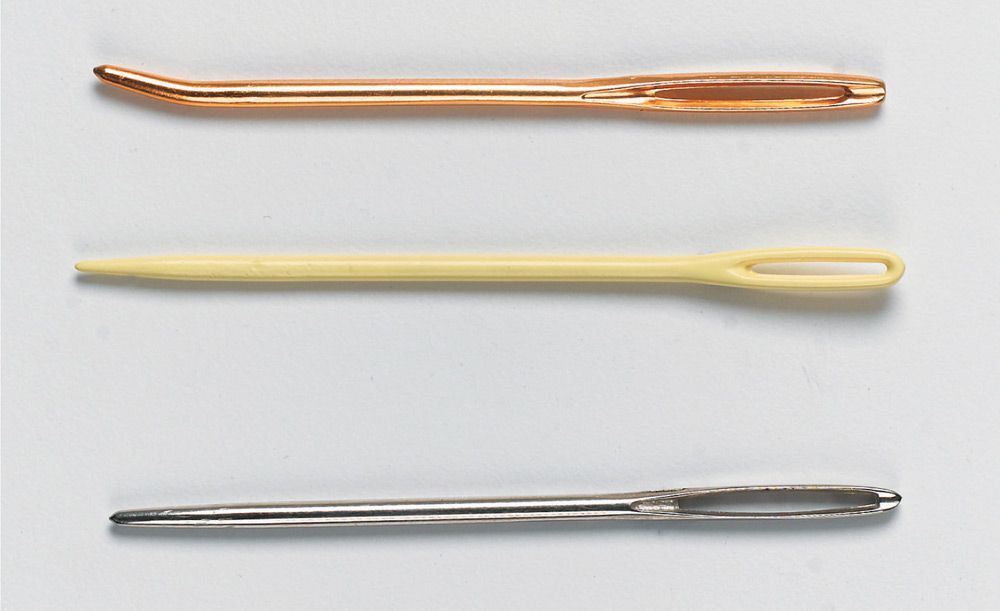The Complete Photo Guide to
CROCHET
2nd Edition

CONTENTS
Introduction to Crochet
Crochet is such an amazing craft. With a simple hook and a single strand of yarn, one can explore countless variations of this multifaceted technique.
While crochet has been around for several hundred years, recently it has experienced a huge resurgence in popularity. Not only is it a favorite way to create home dcor items, but crochet has also made its way onto trendy designer runways, has taken a turn on Hollywoods red carpet, and is often featured in fashion magazines. Today, crochet is well on its way to becoming the favorite pastime of many crafters around the world.
I am often asked which I like better, crochet or knitting. My answer has always been, I love both, but I can crochet a lot faster than I can knit.
Last year I was honored to be inducted into the Jean Leinhauser Crochet Hall of Famewhat a great way to top off a very long career in the needle arts industry. My first book was published in 1978, and that book included both knit and crochet designs. My early books were equally divided between knit and crochet, but of the last seventeen books that I have done, fourteen have been crochet. I have Creative Publishing international to thank for recognizing the need to make more crochet books available.
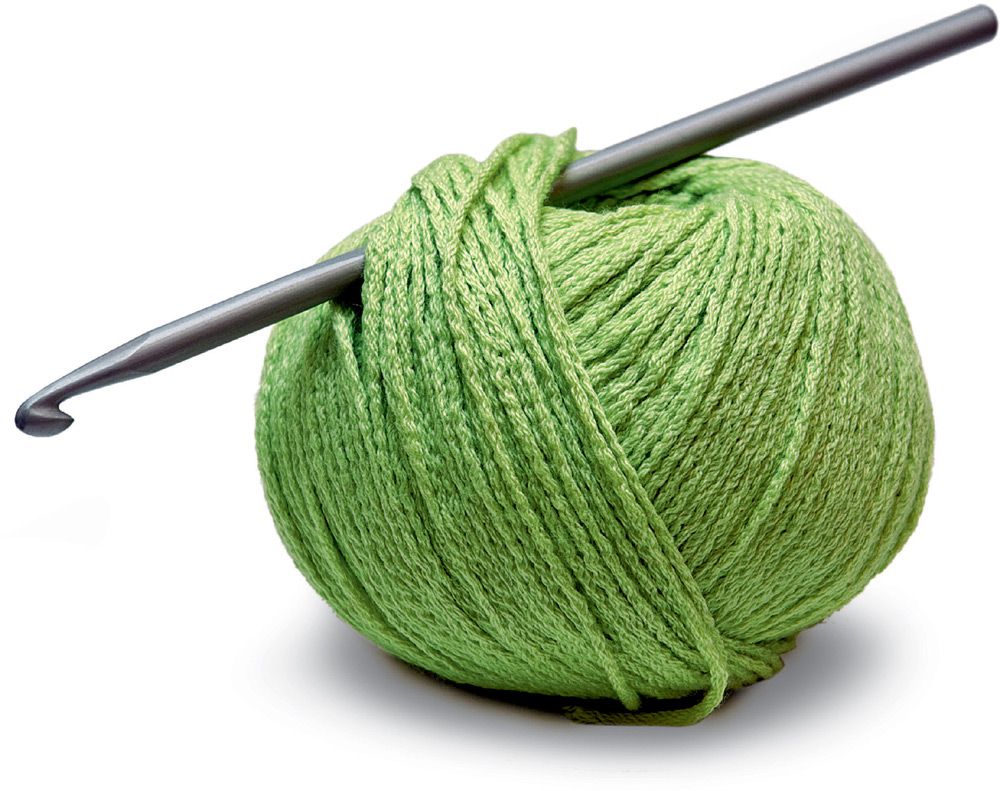
Crochet has its own defined look and the variety of textures that can be created with a crochet hook is almost limitless, from a very lacy delicate shawl with fine yarns to a warm, cozy afghan with a thicker wool and larger hook. In this new edition, I have added twenty new stitches to the extensive collection of stitches in the original book. Everything from delicate and lacy openwork to heavier textures like bobbles, bullions, limpets, basketweave, double-sided crochet, edgings, motifs, and Tunisian stitches are all included.
Detailed, step-by-step instructions, charts, and photographs accompany each stitch. The stitches are all ranked by level of difficulty to help you try your hand at progressively complex stitches. There are fifteen new sample projects throughout the book that showcase at least one of the stitches used in each group.
In addition to the stitch section, there is a specialty crochet methods section. In this section, I have included methods such as freeform crochet, intermeshing crochet, and crocheting raglans from the top down.
I have tried to include something for everyone, so please enjoy!
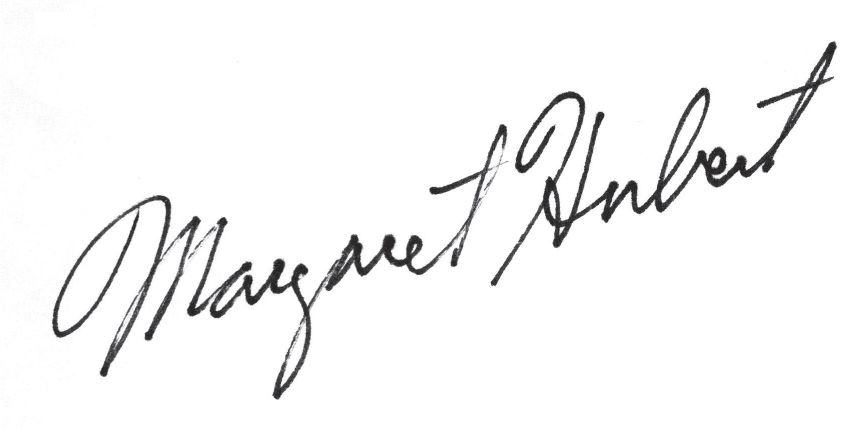
CROCHET BASICS
In this section, you will find all the information you need to get you started. If you are new to crochet, use these pages to learn the basic techniques and terminology of crochet. If you are a seasoned crocheter, you will still refer to this section often for guidance on abbreviations, hook sizes, and more.
Crochet Hooks and Other Tools
Crochet hooks come in a large range of sizes and types. There are very fine steel hooks for fine cotton crochet, and aluminum, wood, and plastic hooks for heavier wools and synthetic yarns.
The diameter of the hook shaft determines the size of the hook and, ultimately, the size of the stitches the hook will make. Hook sizes range from a tiny A hook to a large Q and everything in between. There are many manufacturers of hooks, and it is very possible that two hooks with the same number or letter can vary from manufacturer to manufacturer. This enforces the need to take the time to check your gauge (see ) before starting a project.
CROCHET HOOK SIZES |
Metric Size | U. S. Size |
2.25 mm | B/1 |
2.75 mm | C/2 |
3.25 mm | D/3 |
3.5 mm | E/4 |
3.75 mm | F/5 |
4 mm | G/6 |
4.5 mm | |
5 mm | H/8 |
5.5 mm | I/9 |
6 mm | J/10 |
6.5 mm | K/10 / |
8 mm | L/11 |
9 mm | M/N/13 |
10 mm | N/P/15 |
15 mm | P/Q |
16 mm | Q |
19 mm | S |
Note: Steel hooks are sized differently than regular hooks: the higher the number, the smaller the hook. They range from the smallest #14 or .9 mm to the largest of #00 or 2.7 mm.
Tapered hook vs inline hook
For crochet hooks, there are two main categories in head shape; the inline hook and the tapered hook. On an inline hook, the neck just below the hook is the same diameter as the shaft of the hook. The neck below the hook on the tapered style is narrower than the rest of the shaft. You might find one style easier to use than the other, or you may notice no difference in how they workit is strictly a personal preference.
In addition to hooks, a crochet kit should have a tape measure, sharp scissors, stitch markers, and a variety of tapestry or yarn needles. The bent-end yarn needles are particularly helpful in sewing seams in crocheted projects.
You can purchase yarn in different textures, styles, and thicknesses, which will affect your choice of crochet hook.
Yarn needles
Generally, projects that require very thick yarns will require larger hooks. Projects crocheted with very fine yarn will require a smaller hook. Crochet patterns will recommend a yarn type and weight as well as the size hook to use. You can substitute the yarn used providing you check your gauge (see ).
The variety of yarn available to crocheters is overwhelming. In addition to wool, cotton, linen, silk, and acrylics, choices include bamboo, corn, and sugar cane fibers. You can crochet with any yarn, but youll find that some yarns will be more difficult to crochet with. When crocheting with very highly textured yarnsribbon, eyelash, bumps, and bobblesit is more difficult to see the stitches, but you can produce some wonderful results.
Techniques
These are the techniques used for crochet. Beginners can use this section to learn the skills they will need to tackle a crochet project. Refer to them whenever you need to brush up on stitches and maneuvers you have already learned. The instructions are written out completely, making them easier to understand.


